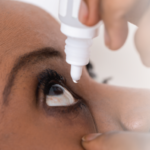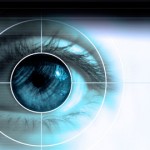“Why don’t you have an ophthalmoscope?” I said, recounting the story of one of my attendings who asked us the following question: If you were stranded on a desert island, which medical instrument would be most valuable? An ophthalmoscope was the right answer because it could show, for example, the devastation resulting from hypertension, diabetes, or imminent brain herniation. Thinking of my own scope (the thoughtful gift from some drug company), I remembered my diligent but often futile searches for hemorrhages, exudates, cotton wool spots, cytoid bodies, arteriovenous nicking, spontaneous venous pulsations, and the many other signs we were expected to recite at rounds.
I cannot imagine what would have happened had I told my attending that not only had I not looked at the fundus, but that I didn’t know where to find an ophthalmoscope on the ward. Nevertheless, my house officer told me, the fundus is hard to see and, anyway, he didn’t know what those things at the back of the eye looked like.
Times change. Maybe looking at the fundus is not that important, especially when the CT scanner or other whiz-bang imager tells us everything. I don’t believe that notion, however, because an essential part of medicine is the intimate contact with a patient and an intense and sustained effort to figure out what is wrong by listening, touching, and even peering into those body spaces where it is possible to gaze inside.
I cannot speak for other specialties but, from my perspective watching others on the general medicine ward, I think that in rheumatology, the doctor–patient relationship is alive and well in its visceral and sensate way.
Good for us. Let’s keep it that way.
Dr. Pisetsky is physician editor of The Rheumatologist and professor of medicine and immunology at Duke University Medical Center in Durham, N.C.


